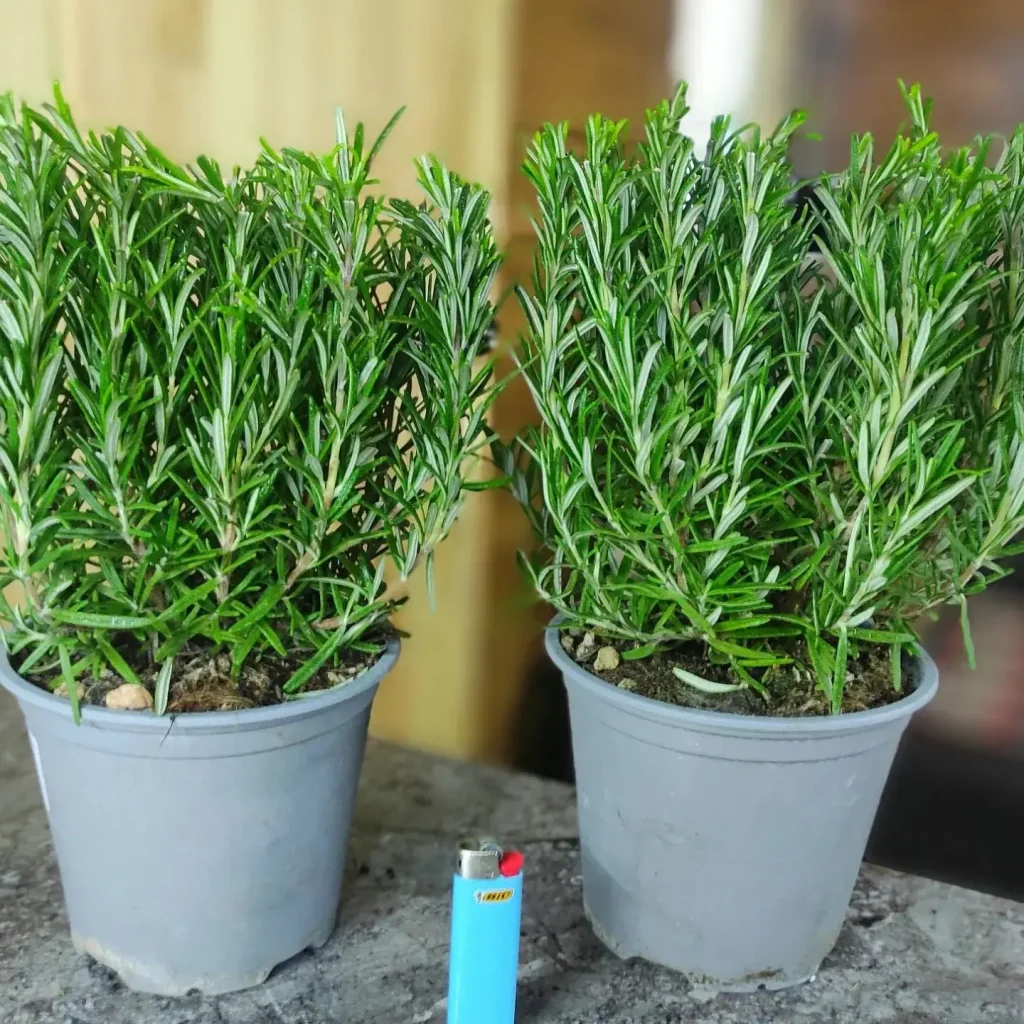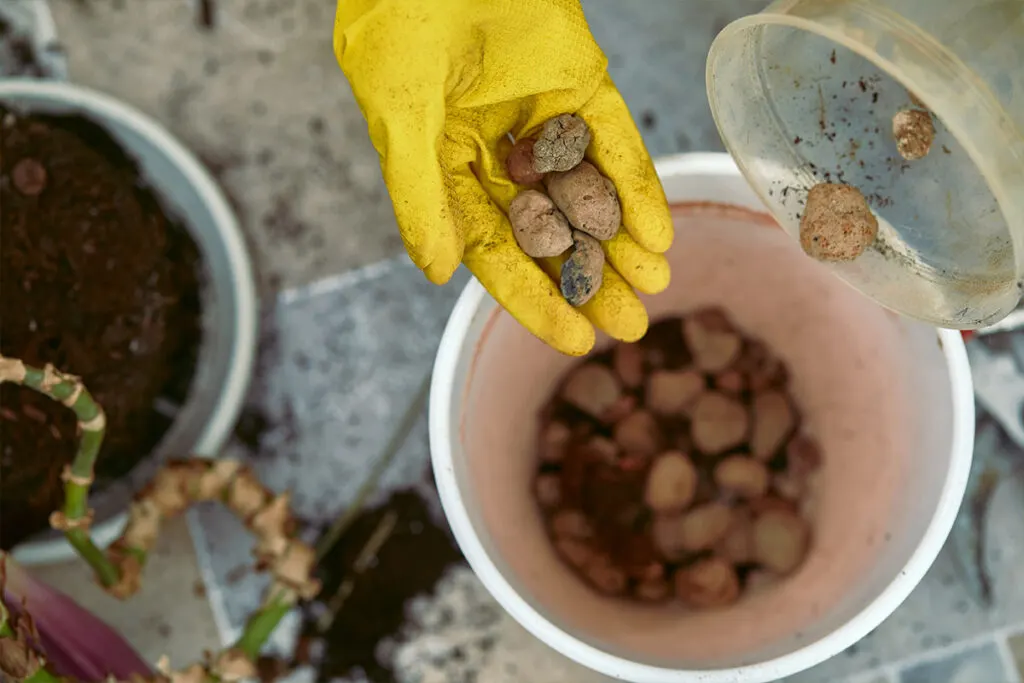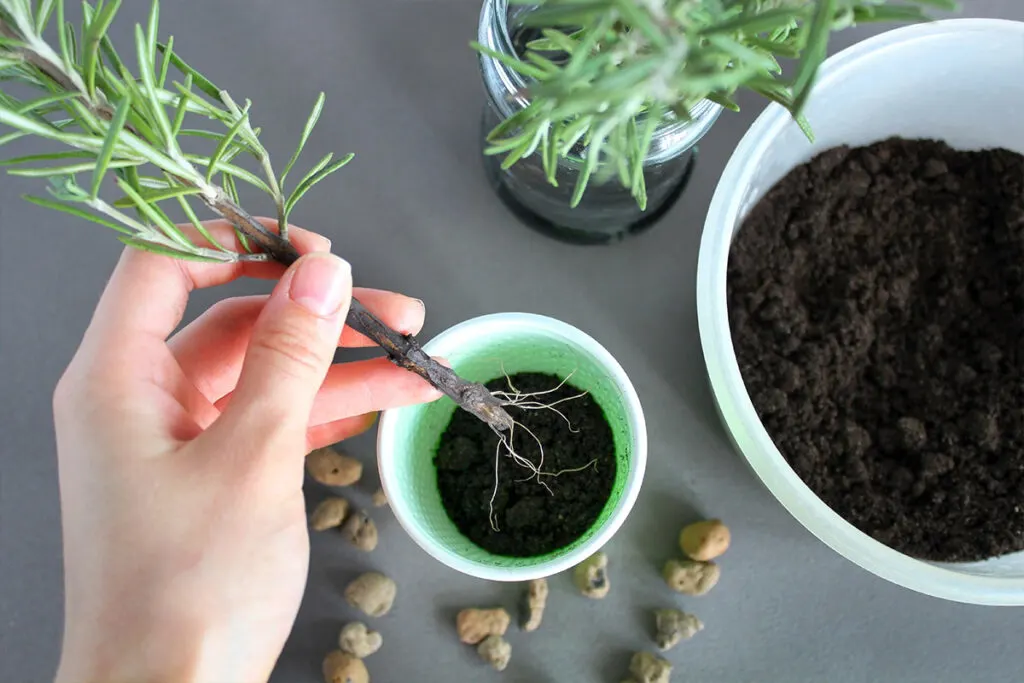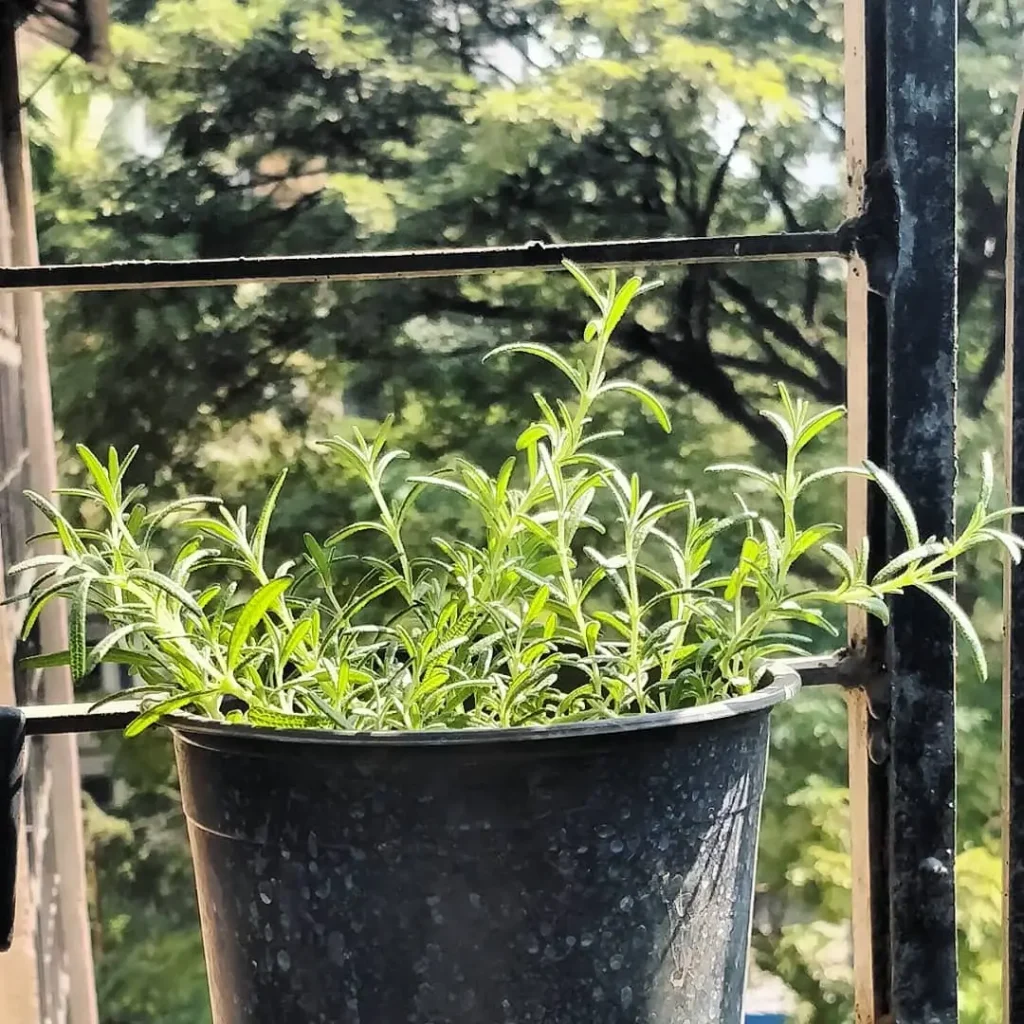How To Grow Lots Of Rosemary – In Pots: A Pro’s Guide
Rosemary, with its fragrant aroma and culinary versatility, is a delightful addition to any herb garden. Growing rosemary in pots offers numerous benefits, from convenience and accessibility to space-saving advantages.

Whether you’re a seasoned gardener or a beginner, this guide will equip you with the knowledge and techniques to cultivate thriving rosemary plants in containers.
Choosing the Right Pot: A Home for Your Herb

Size Matters: Select a pot that’s at least 12 inches in diameter and depth to provide ample space for root growth. As your rosemary flourishes, you may need to repot it into a larger container every few years.
Material Considerations: Terracotta or ceramic pots are excellent choices due to their breathability and drainage capabilities. Plastic pots can also be used, but ensure they have sufficient drainage holes to prevent waterlogging.
Preparing the Potting Mix: The Foundation for Success
Ideal Soil Composition: Rosemary thrives in well-draining soil. A suitable mix consists of equal parts potting soil, sand, and perlite. This combination ensures proper drainage while retaining adequate moisture for the plant.
Adding Amendments: To further enhance drainage and provide essential nutrients, consider incorporating organic matter such as compost or aged manure into the potting mix.
Selecting the Right Location: Sun and Temperature
Sunlight Requirements: Rosemary is a sun-loving herb, requiring at least 6-8 hours of direct sunlight daily. Choose a location that receives ample sunshine, such as a south-facing window or balcony.
Temperature Considerations: Rosemary prefers warm temperatures between 60-75°F (15-24°C). Protect your plants from frost during winter by bringing them indoors or providing insulation.
Planting Rosemary: Starting Your Herb Garden

Transplanting Seedlings: If you’re starting with young rosemary plants from a nursery, gently remove them from their containers and plant them at the same depth in your prepared pot.
Caring for Established Plants: For established rosemary plants, ensure they have sufficient space to grow and avoid overcrowding.
Watering Techniques: Finding the Right Balance
Frequency and Quantity: Water your rosemary deeply when the top inch of soil feels dry. Avoid overwatering, as this can lead to root rot. During winter, reduce watering frequency as the plant’s growth slows down.
Watering Schedules: The frequency of watering will depend on factors such as pot size, climate, and sunlight exposure. Monitor your plant closely and adjust your watering schedule accordingly.
Fertilizing Tips: Nourishing Your Rosemary

Organic Options: Rosemary benefits from occasional fertilization. Opt for organic fertilizers such as compost tea, worm castings, or a balanced organic granular fertilizer.
Application Methods: Apply fertilizer according to the package instructions, typically during the growing season. Avoid over-fertilizing, as this can damage the plant.
Pruning and Maintenance: Shaping Your Rosemary for Optimal Growth
Pruning is an essential aspect of rosemary care, promoting bushier growth, preventing legginess, and maintaining the plant’s overall health and aesthetics. Let’s delve into the techniques and benefits of pruning your potted rosemary:
Shaping and Encouraging Bushiness:
- Regular Trimming: Throughout the growing season, regularly trim the tips of the branches using sharp pruning shears. This encourages lateral branching and creates a fuller, more compact plant. Aim to remove no more than one-third of the plant’s growth at a time.
- Pinching Back New Growth: Pinch back the tips of new shoots to promote branching and prevent the plant from becoming too tall or spindly.
- Shaping: Prune your rosemary into desired shapes, such as a rounded bush, a topiary form, or even a small hedge. Use pruning shears to carefully remove any stray or overgrown branches.
Maintaining Plant Health:
- Removing Dead or Diseased Wood: Periodically inspect your rosemary plant and remove any dead, diseased, or damaged branches. This helps prevent the spread of diseases and promotes air circulation within the plant.
- Thinning Out Dense Growth: If your rosemary becomes overly dense, thin out some of the interior branches to improve air circulation and light penetration, reducing the risk of fungal diseases.
Additional Maintenance Tips:
- Repotting: As your rosemary plant grows, it may become rootbound in its pot. Repot every few years into a slightly larger container with fresh, well-draining potting mix.
- Winter Care: In regions with harsh winters, bring your potted rosemary indoors or provide insulation to protect it from frost damage. Reduce watering frequency during winter dormancy.
Benefits of Pruning:
- Increased Yield: Regular pruning stimulates new growth, leading to a more abundant harvest of rosemary sprigs.
- Improved Plant Health: Removing dead or diseased wood prevents the spread of diseases and promotes overall plant health.
- Enhanced Aesthetics: Pruning helps maintain a desirable shape and prevents your rosemary from becoming leggy or overgrown.
- Longer Lifespan: Proper pruning practices contribute to the longevity and vitality of your rosemary plant.
By incorporating regular pruning and maintenance into your rosemary care routine, you’ll foster healthy, vibrant plants that provide a continuous supply of fragrant herbs for your culinary and aromatic enjoyment.
Pest and Disease Management: Protecting Your Rosemary’s Health
While rosemary is generally a hardy herb, it can occasionally encounter pests or diseases. Vigilance and early intervention are key to keeping your plants healthy and thriving. Let’s explore some common culprits and how to address them:
Common Pests
- Aphids: These tiny, sap-sucking insects can cluster on leaves and stems, causing stunted growth and distorted foliage. Treat infestations with a strong spray of water or insecticidal soap.
- Spider Mites: These minuscule pests are difficult to see with the naked eye but leave behind telltale webbing. They cause leaves to turn yellow and stippled. Neem oil or insecticidal soap are effective controls.
- Whiteflies: These small, white-winged insects feed on the undersides of leaves, causing yellowing and weakening of the plant. Use yellow sticky traps or insecticidal soap to manage infestations.
Common Diseases
- Powdery Mildew: This fungal disease appears as a white, powdery coating on leaves, stems, and flowers. Ensure good air circulation, avoid overhead watering, and apply a fungicide if necessary.
- Root Rot: Caused by overwatering or poorly draining soil, root rot leads to mushy, brown roots and wilting foliage. Remove affected plants, trim away rotten roots, and repot in fresh, well-draining soil. Adjust watering practices to prevent recurrence.
Prevention Tips
- Healthy Plants are Resistant Plants: Provide optimal growing conditions, including adequate sunlight, well-draining soil, and proper watering, to promote strong, healthy plants that are less susceptible to pests and diseases.
- Inspect Regularly: Monitor your rosemary plants regularly for any signs of pests or diseases. Early detection allows for prompt treatment and prevents widespread problems.
- Good Hygiene: Remove fallen leaves and debris around your plants to eliminate hiding places for pests and reduce the spread of diseases.
- Natural Predators: Encourage beneficial insects such as ladybugs and lacewings, which prey on aphids and other common pests.
By understanding potential threats and implementing these preventive measures, you can ensure your rosemary plants remain healthy and productive, providing you with an abundant harvest of fragrant herbs for years to come.
Harvesting Rosemary: Enjoying the Fruits of Your Labor
Timing and Techniques: Harvest rosemary sprigs as needed, using sharp scissors or pruning shears. The best time to harvest is in the morning when the essential oils are most concentrated.
Maximizing Yield: Regular harvesting encourages new growth and ensures a continuous supply of fresh rosemary. Avoid removing more than one-third of the plant at a time.
Overwintering Strategies: Protecting Your Rosemary
Protecting Plants from Frost: In regions with harsh winters, bring your potted rosemary indoors or provide insulation to protect it from frost damage.
Indoor Care During Winter: Place your rosemary near a sunny window and reduce watering frequency during winter.
Creative Uses for Rosemary: Beyond the Kitchen
Culinary Applications: Rosemary’s aromatic leaves enhance a wide range of dishes, from roasted meats and vegetables to soups, stews, and breads.
Aromatic Purposes: Rosemary’s fragrance is known for its calming and invigorating properties. Use it in potpourris, sachets, or essential oil diffusers.
Troubleshooting Guide: Addressing Common Problems
Yellowing Leaves: This could indicate overwatering, poor drainage, or nutrient deficiencies. Adjust your watering habits, ensure proper drainage, and consider fertilizing if needed.
Root Rot: Mushy, brown roots are a sign of root rot, often caused by overwatering. Remove the affected plant, trim away rotten roots, and repot in fresh, well-draining soil.
Lack of Growth: Insufficient sunlight or nutrient deficiencies can hinder growth. Ensure your rosemary receives adequate sunlight and consider fertilizing.
Benefits of Growing Rosemary in Pots: Convenience and Versatility
Convenience and Accessibility: Potted rosemary allows you to enjoy fresh herbs readily available on your patio, balcony, or even indoors.
Space-Saving Advantages: Container gardening is ideal for those with limited space, enabling you to cultivate rosemary even in small apartments or urban settings.
Conclusion: Embrace the Joys of Potted Rosemary
Growing rosemary in pots is a rewarding and enjoyable experience. By following these guidelines and providing your plants with proper care, you’ll be rewarded with an abundance of fragrant, flavorful rosemary to enhance your culinary creations and infuse your home with its delightful aroma. So, embrace the joys of potted rosemary and embark on your herb-growing journey today!






